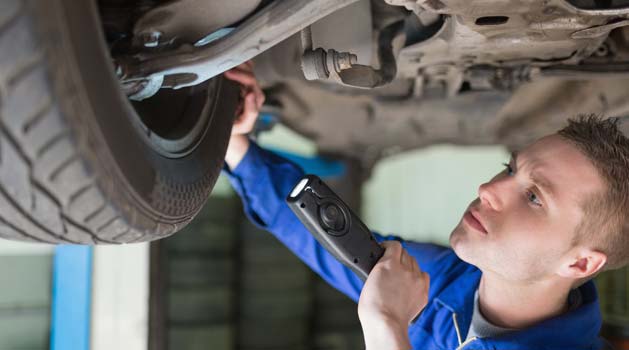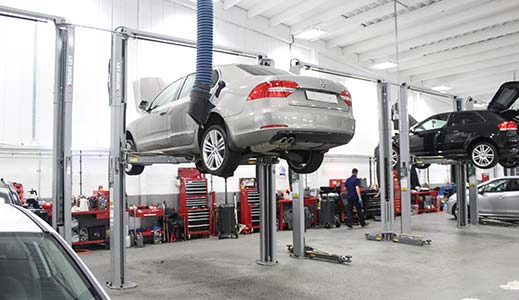MOT Test Changes in 2018: An Overview
01st Jun 2018
Changes have been made to the current roadworthiness directive by the Government, which will affect MOT testing and procedures for vehicles across the U.K, arguably making them tougher.
Roads Minister Jesse Norman, announced the decision of the changes earlier this year and said:
"We have some of the safest roads in the world, and are always looking at ways of making them safer. Although modern cars are better built and safer than when the MOT test was last changed 50 years ago, there has been a clear public concern that any further changes don't put people's lives at risk."
The MOT changes came in to effect on 20 May 2018 and developments have been made to the current Driving and Vehicle Standards Agency (DVSA) regulations in an attempt to tackle emissions by tightening the rules.
Diesel powered vehicles will mostly be affected by the changes, meaning around half of the U. K's motorists. MOT testers have been advised to check diesel particulate filters (DPF) - a component designed to reduce pollution levels. Those that have been tampered with or removed, or vehicles emitting any colour of smoke will face an instant fail.
Here is what we know about the MOT rule changes:
Defect Categorisations
The new test categorises defects and faults of vehicles under different rankings, rather than the previous 'pass or fail' system. Each different ranking/category determines a pass or fail.
In the event of a fault being deemed as dangerous or major vehicles will instantly fail the test, whilst a minor fault will be recorded on the MOT certificate and online MOT record, just as advisories are now.
The new design of the MOT test certificate will clearly list any defects and ensure that the action required for each individual item/equipment is easy to understand.
|
Category |
Action required/ Impact of defect |
MOT Result |
|
Pass |
Minimum legal standard of the vehicle has been met and no further action is required. |
Pass |
|
Advisory |
Describes a defect that despite passing, could become more serious in the future and must be monitored and repaired if necessary. |
Pass |
|
Minor |
Issues posing no substantial risk on the safety of the vehicle and other road users, impact on the environment and other minor defects which fail to act in accordance with the new rules laid out by the DVSA. |
Pass |
|
Major |
Faults that have the potential to affect the safety of the vehicle and other road users, have an impact on the environment and more significant defects of the vehicle which fail to act in accordance with the new roadworthiness directive. |
Fail |
|
Dangerous |
Defects which are probable to cause an immediate and unavoidable risk to road users and/or have an impact on the environment. |
Fail |
Additional Parts
Several additional components must also be checked as part of the new MOT test - these are:
Steering
- 'Fly by wire' steering systems
- Steering gear casing
Brakes
- If brake fluid has been contaminated
- Brake pad warning lights and if brake pads or discs are missing
- Endurance braking system (applies to larger vehicles only)
Lamps
- Front fog lamps (fitted to vehicles first used from 1st March 2018)
- Daytime running lamps (fitted as original equipment on or after 1st March 2018)
- Reversing lamps (fitted to vehicles first used from 1st September 2009)
- Headlight washers on vehicles first used from 1st September 2009 (if they have them)
Other equipment
- Noise suppression systems (i.e. exhaust silencers and under-bonnet deadening material)
- Anti-theft device
- Underinflated tyres
- Fluid leaks causing an environmental risk

MOT Exemptions
In the past, cars and motorcycles that were produced before 1960, or more commonly referred to as 'classic cars' were exempt from needing a MOT. The new changes mean that all cars that are older than 40 years will no longer be required to take a statutory MOT test. Goods vehicles powered by electric and tractors are also exempt from needing a MOT.
Of course, if motorists feel as though their car is unsafe to drive, it is advised that they take their car in for a MOT. They are still responsible for ensuring the roadworthiness of their vehicle as well as making sure it poses zero threats to other road users and/or the environment.
The maximum charge that MOT centres can impose will remain the same, despite changes to the test. Further information regarding the changes can be found here, alternatively, your MOT centre will be able to answer any questions you may have.
A vehicle without a valid MOT can result in a fine of up to £1,000. Set up a free reminder to make sure you don't forget about yours.
Book an MOT Online

Servicing
Quality car servicing at a price to suit all budgets. Book yours online today.



